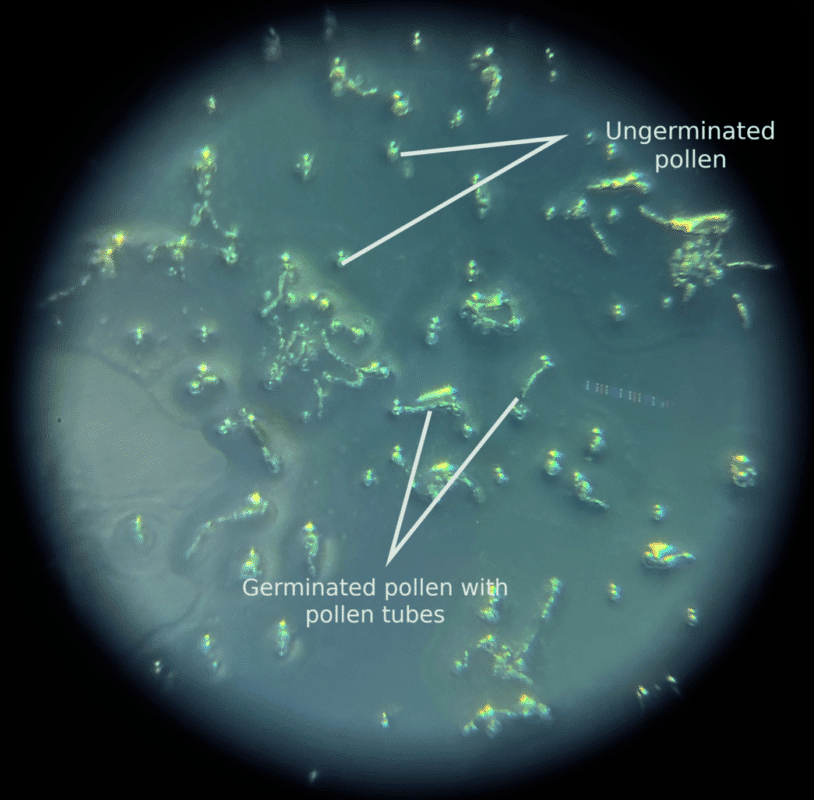Cycad pollen conservation
Original Title: La conservation du pollen de Cycadales
By Simon Lavaud
31 October 2022
Introduction :
Most cycads being rare and endangered in their habitat, cultivated plants play a crucial role for seed production. However, pollen is not always available when needed for various reasons : females produce cone relatively infrequently and not necessarily the same year as males, every plant has its own cycle and sometimes females are receptive earlier than males etc. And for the rarest species, it’s common to only have a few individuals dispersed in collections which makes it useful to be able to store pollen in order to be able to ship to someone who would be in possession of a coning female lacking pollen.
It can also be noted that pollen storage is very useful for hybrid production since the various species do not necessarily have the same reproductive seasons.
Cycad pollen has a short shelf life in the environment, but there are techniques allowing long term conservation in the freezer. Following the different steps of harvest and preparation scrupulously ensures an optimal conservation with a pollen that will retain a good viability.
Harvesting the pollen:
This step is critical because it has a direct impact on pollen quality. One should observe the male cone very often to detect its elongation indicating that it is soon to release the pollen.
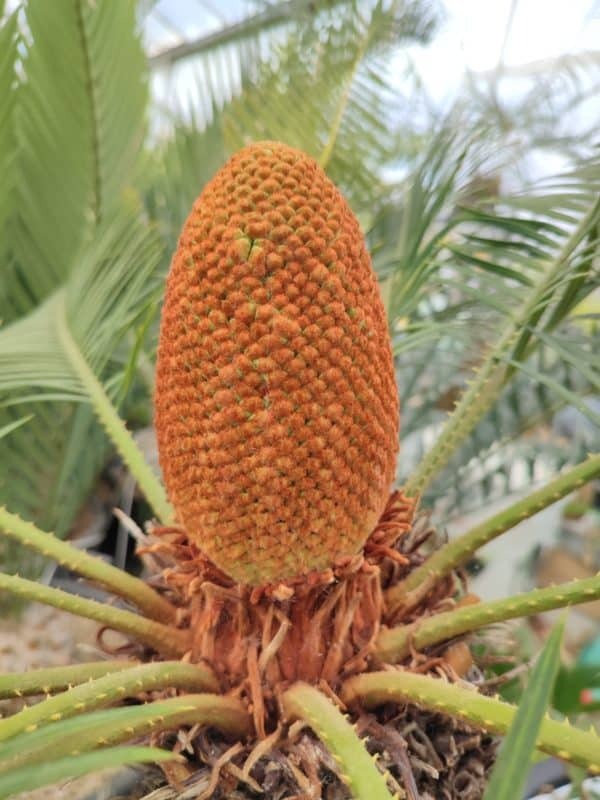
When the cone starts elongating, it should shaken gently every day to see if pollen is being shed.
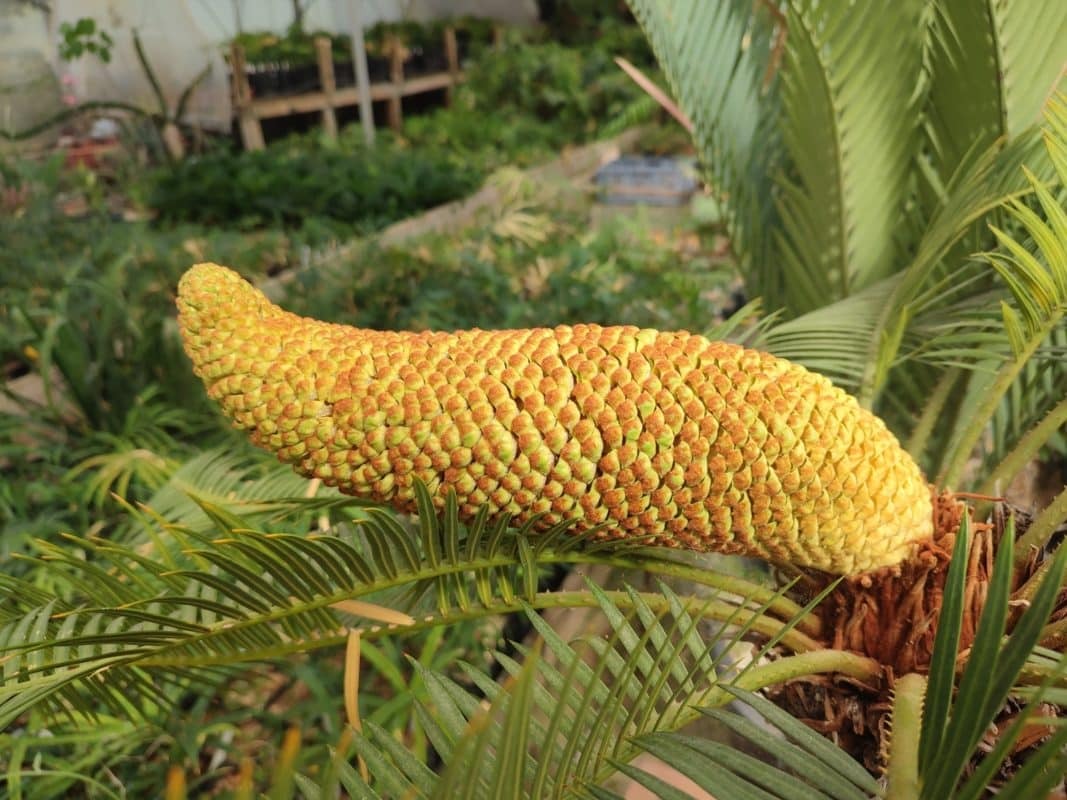
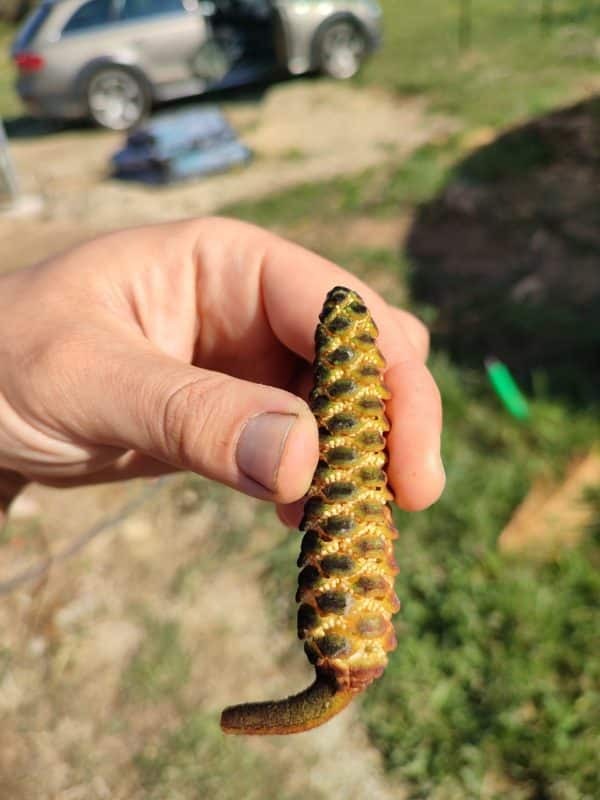
(Note : The cone observation step is really important as it’s very frequent that a cultivator comes across a cone full of pollen without realizing that the pollen had been shed several weeks earlier and had lost all viability, even if it still looks fresh. )
When the pollen is liberated in a relatively large quantities (it’s usually good to cut it when the lower half of the cone is liberating pollen from all the sporophyls), it can be cut by holding it by the tip with one hand and a sharp blade with the other hand, by keeping it vertical to lose as little of the precious pollen as possible.

The cone is laid on a piece of paper in a room without air flow, at room temperature (20-25°C). Large temperature variations should be avoided, especially heat, as they can compromise the pollen viability.
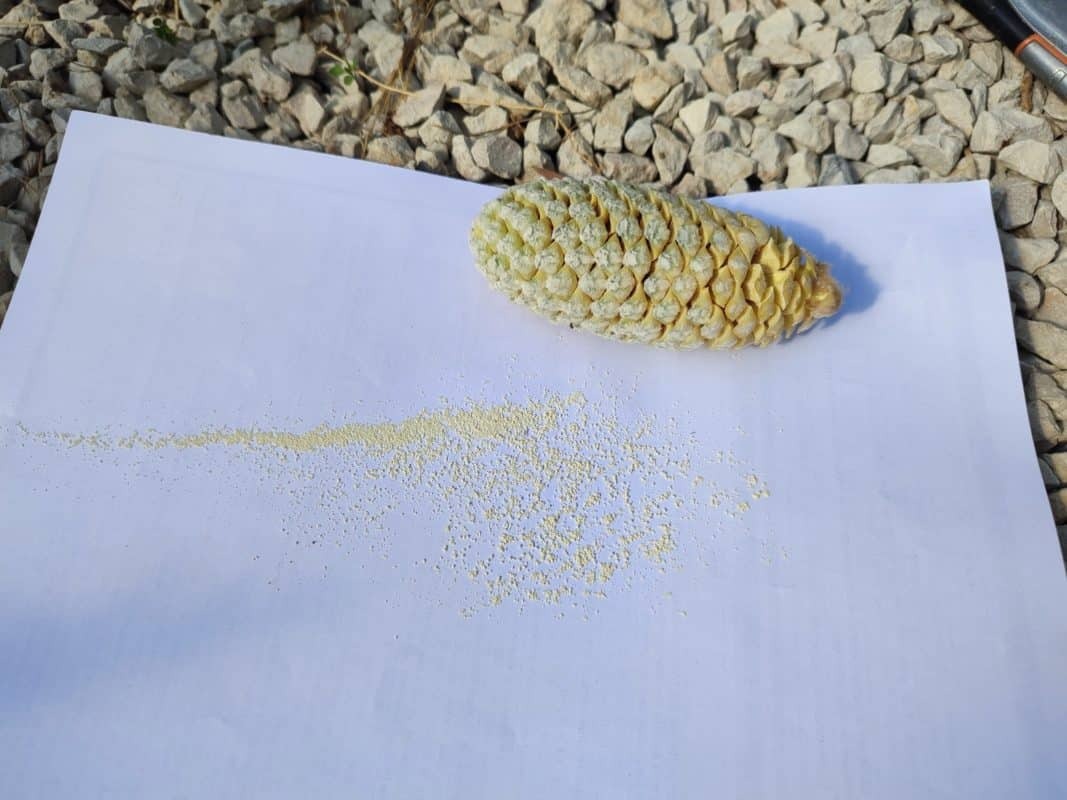
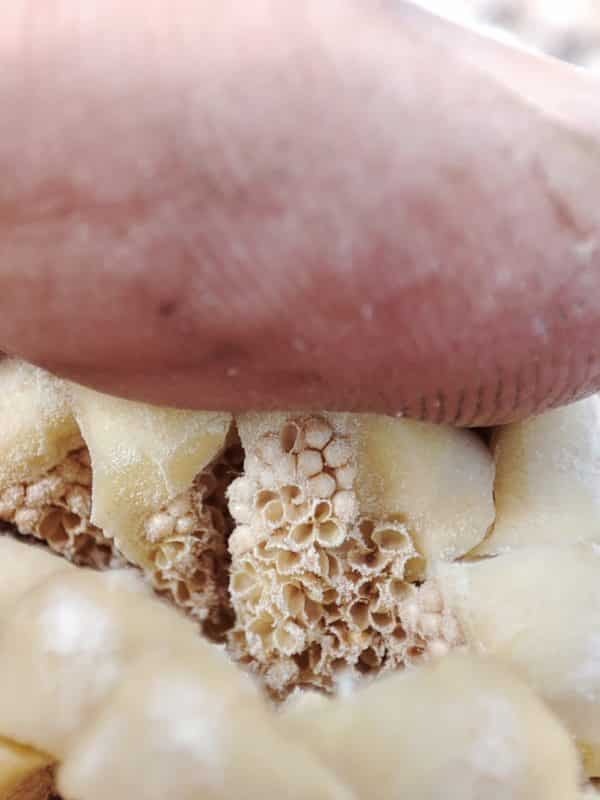
The pollen is going to be released for several days and since the pollen quality tends do decrease rapidly, it’s preferable to harvest and treat the small amount shed every day. So everyday, pollen is recovered and placed in a small paper envelope, thus we end up with as many envelopes as harvest days.
Moreover, having several small envelopes is good to make pollen « doses » and thus not having to take the whole pollen batch from the freezer when needed.
Drying sessions will be done daily with the small harvested quantities. For an optimal storage of pollen, the time between harvest and freezing should be as short as possible while respecting the crucial steps.
Drying procedure:
For an optimum conservation, it’s essential to dry the pollen so avoid having the cells explode due to ice crystals during freezing, but to dehydrate it too much to avoid losing viability.
In general, it’s advised to dry the pollen at 20-25 % which is very easy to get with a drying cabinet for electronic devices. Here I am using a Sirui cabinet, of the HC type and since pollen doesn’t take much space, the smallest model, the HC-40 , is more than enough
The drying time in the cabinet should be around 3-6hours.
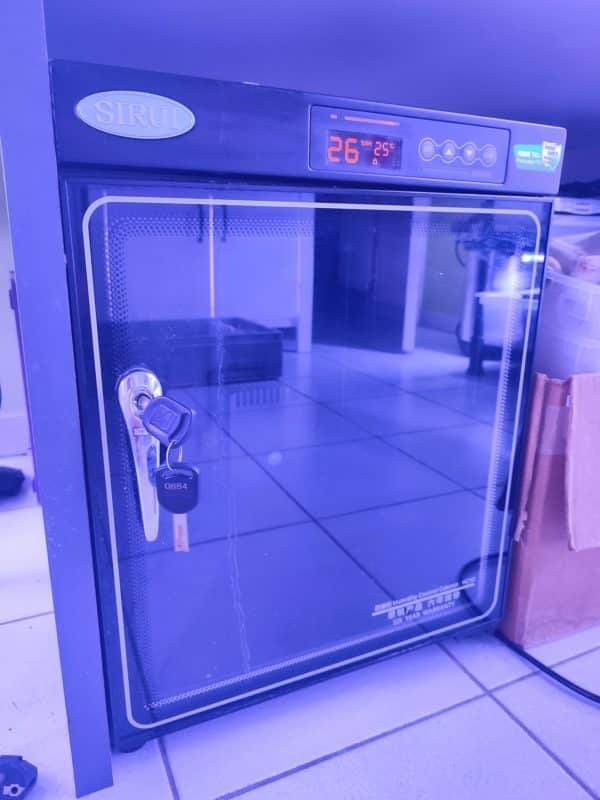
For an occasional drying, small scale collectors might not want to invest in such an expensive and sophisticated equipment,which is why I will detail the low-tech/low-cost method that I used to use and works very well too.
Lots of cultivators use silica gel to dry the pollen, which works well for a number of species, but has the drawback of sometimes drying the pollen too much which is an issue for the most fragile ones and even when frozen the gel keeps drying in the freezer. It’s not necessarily easy to purchase and if it’s not stored in specific conditions, it’s hard to know if it’s still efficient as it absorbs moisture as soon as it’s in contact with it.
The technique that worked for me was the use of rice. A technique well known from clumsy people who accidentally dumped their phone in water and managed to rescue it by drying it in rice for a few days.
One of the reasons for using rice is that it’s dried at 12-14 % before being bagged, so it won’t dry the pollen too much compared to silica gel and it’s very easy to find.
For this conservation method you need : the paper envelope containing the pollen, an air tight container (zip bag, jar etc.) and a BRAND NEW rice packet. It’s absolutely indispensable to use a new bag because like silica, as soon as the packet is open it starts to absorb humidity and if an old, already opened packet is used, the efficiency will be much lower or compromised.
Just open the rice bag, put 100-200g (depends of the pollen amount you want to dry) in the air tight container, just lay the envelope on top, close the container and allow to rest for 12-24h in the fridge (+3/+5°C)
Label the container properly with the species name and date of harvest.
The rice method has proven working with Cycas, Ceratozamia, Dioon and Zamia (whether because I obtained fertile seeds or thanks to in vitro pollen germination, with exemples such as Ceratozamia kuesteriana pollen still being viable 4-5 years after being harvested and stored at -18°C)

Freezing :
According to scientific research, it seems the optimal freezing temperature for pollen is around -30°C and temperatures that are too low (like liquid nitrogen) will destroy the pollen. Household freezers usually have a temperature of around -18°C which is sufficient for a good pollen conservation.
When the drying process is finished, the container with the rice and pollen can be placed in the freezer until its future use.
There is little data on the conservation time of cycad pollen but there are some indicative durations, while it should kept in mind that every species is susceptible to react differently.
Cycas, Encephalartos, Dioon, : 10-15 years
Ceratozamia : 2-5 years
Zamia : 2-3 years
For the other genera, I don’t have data but I suppose Lepidozamia and Macrozamia are similar to Cycas.
Notes on viability tests for pollen :
Unfortunately there are no quick and easy tests for pollen viability but there are techniques that use in vitro germination of the pollen allowing to estimate the pollen viability and thus reduce the uncertainties in the pollination process. The technique I have been using is not extremely complicated but since the scientific results of the inventors of the protocol have not been published yet, I cannot share their technique yet. I’ll update this article as soon as the protocol is available to the public.
